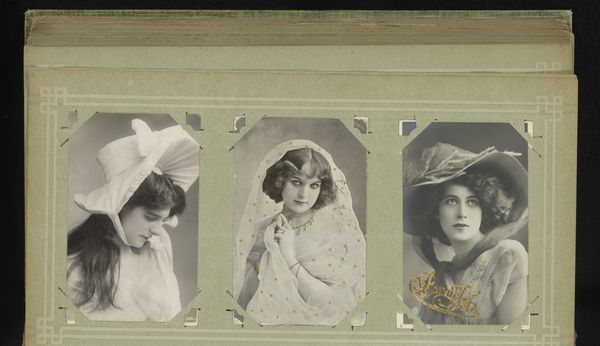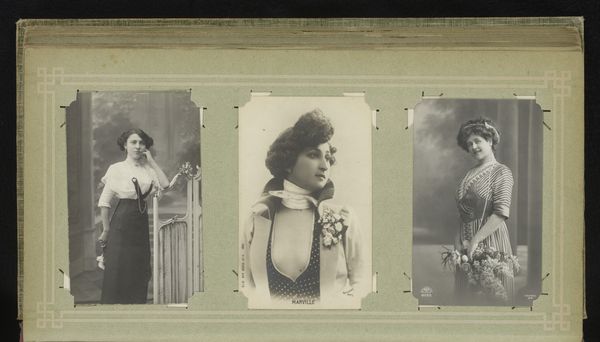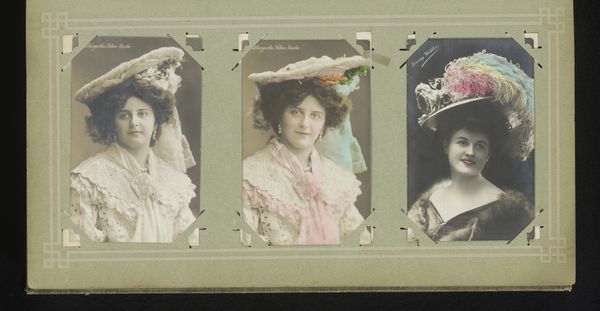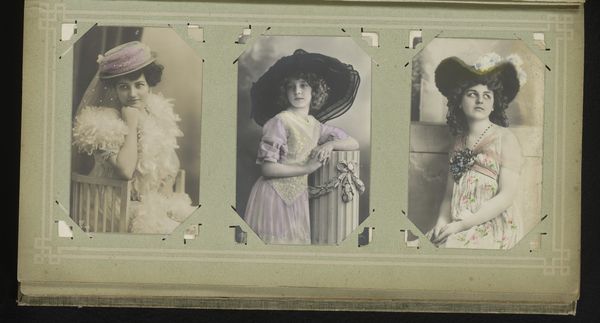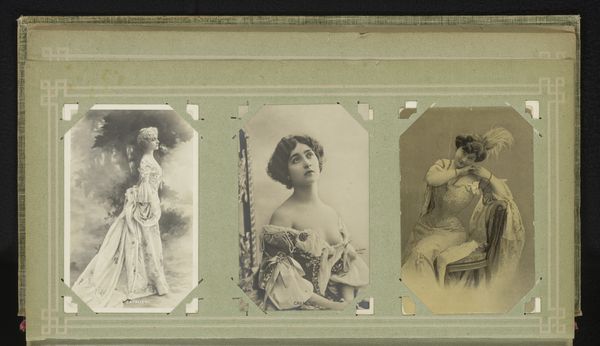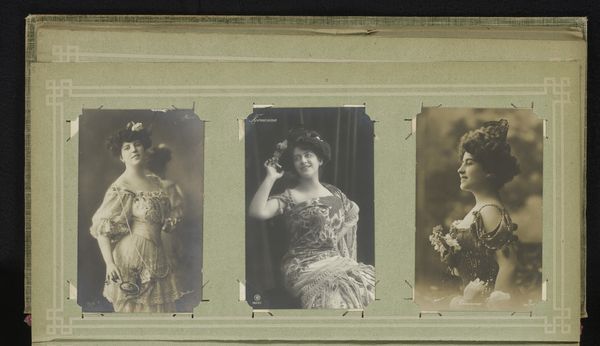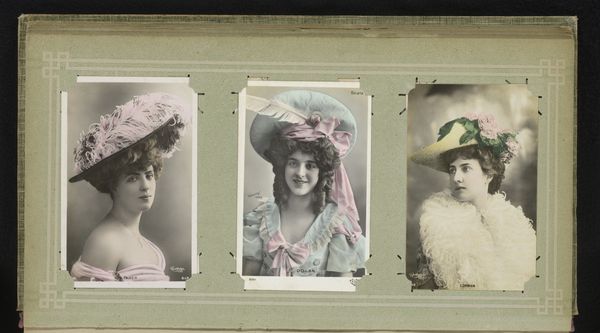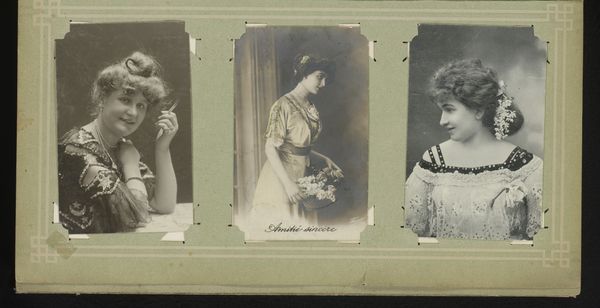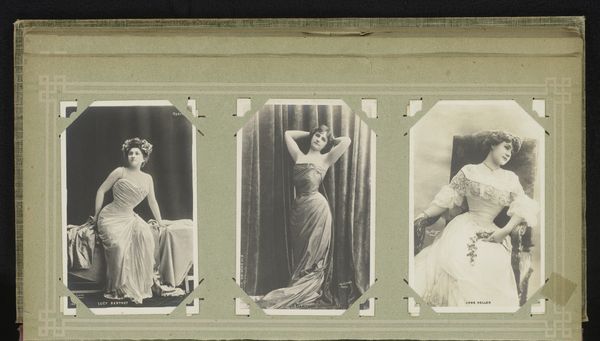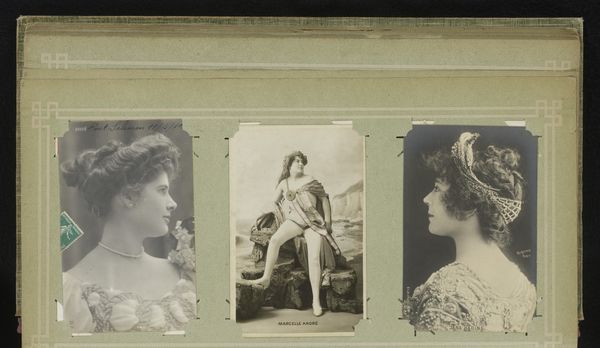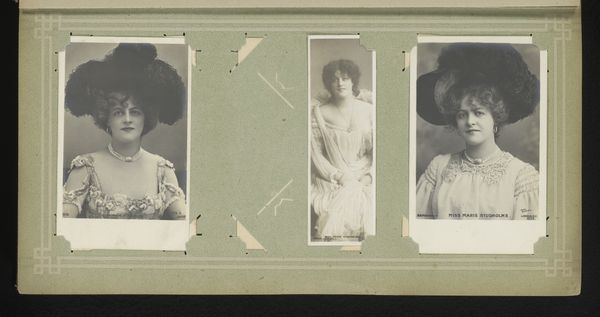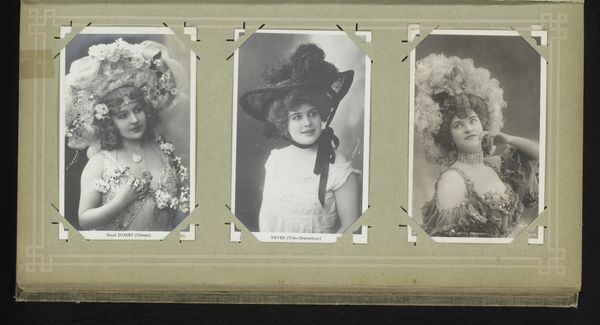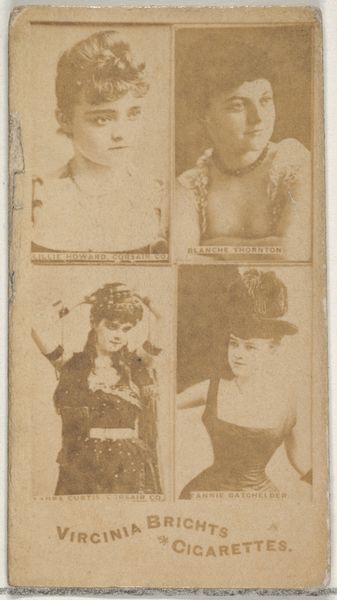
print, photography, photomontage
#
portrait
#
art-nouveau
#
muted colour palette
#
pictorialism
# print
#
sculpture
#
photography
#
photomontage
#
muted colour
Dimensions: height 196 mm, width 368 mm
Copyright: Rijks Museum: Open Domain
Curator: This intriguing photomontage titled "Drie portretten van jonge vrouwen" is attributed to Georg Gerlach & Co. and dates from somewhere between 1900 and 1930. Editor: What strikes me immediately is its intimacy, despite being, in essence, a collection of posed studio shots. It feels like a glimpse into someone’s personal album, evoking a sense of wistful nostalgia and yearning for the past. Curator: Absolutely, the pictorialist style emphasizes soft focus and tonal effects, creating an almost dreamlike quality. The arrangement in the frame acts as an important feature here; the portraits, each one unique, appear almost as individual devotional icons. Editor: That framing contributes to the feeling of fragmentation, perhaps reflecting the fractured nature of female identity at the turn of the century. The woman in the center seems constrained in her domestic role. I notice the composition choices, and I find it is really interesting in this photo of her leaning slightly with a certain tiredness. Her expression suggests a resignation or dissatisfaction with the societal expectations of women. Curator: That is insightful. Consider the recurring motifs within each portrait: they each tell their own story but coalesce. Her pose suggests a delicate balance between revealing and concealing. There is also the art nouveau influence with decorative lines and flourishes, hinting towards a sense of beauty. Editor: It speaks to how even within rigid constraints of the time, women sought agency, expressing subtle individuality, despite expectations from them. What about the muted palette and its possible effect? Curator: The deliberate restraint in colour palette reinforces the sentiment. In contrast to other forms of studio photography popular at the time, they aren’t interested in stark verisimilitude. Their use of photography reflects their symbolic power of capturing images and emotional memory through visual symbolism, rather than the exact. Editor: Overall, this piece offers a layered perspective on turn-of-the-century womanhood: constraints of conventional beauty, longing for a connection, finding expressions beyond set parameters. I hope people keep in mind this photomontage in their journey, and allow themselves to relate to our piece in all their emotional context, be it constraint or the liberation of expressions. Curator: I concur, viewing this reminds us about our own relationship with our inner life that echoes. Thank you for guiding our listeners toward the symbolism and its implications.
Comments
No comments
Be the first to comment and join the conversation on the ultimate creative platform.
